TEN THINGS ABOUT THE SCIENCE OF TIRES
(1) Purpose. Tire manufacturers design specific tires for soft-, intermediate- and hard-terrain conditions. Soft-terrain tires are made to work in soft sand and mud. Intermediate-terrain tires are popular for most standard motocross tracks with good traction and a mixture of soft and hard dirt. Hard-terrain tires are made for harder packed conditions with less traction.
(2) Design. The knob patterns are different depending on which terrain the tire was made for. The land-to-sea ratio describes how much of the surface of the tire has knobs and how much of it is without knobs. The knobs represent the land, and the area without knobs represents the sea. A tire with more knobs has more rubber making contact with the ground with each rotation of the tire. The pattern in which the knobs are placed is also designed specifically for each tire’s purpose.
(3) Rigidity. The rubber compound, number of knobs, and the size and style of knobs will determine how rigid or soft the tire is. A stiffer rubber compound will be more durable and will provide less flex, which is good for soft conditions, while a soft compound will flex more and provide more traction on intermediate and hard terrain. The slope on the backside of the knobs contributes to the amount of flex the knob has. Tie-bars are also added to connect the bases of the knobs, which adds more rubber and more rigidity to the tire.
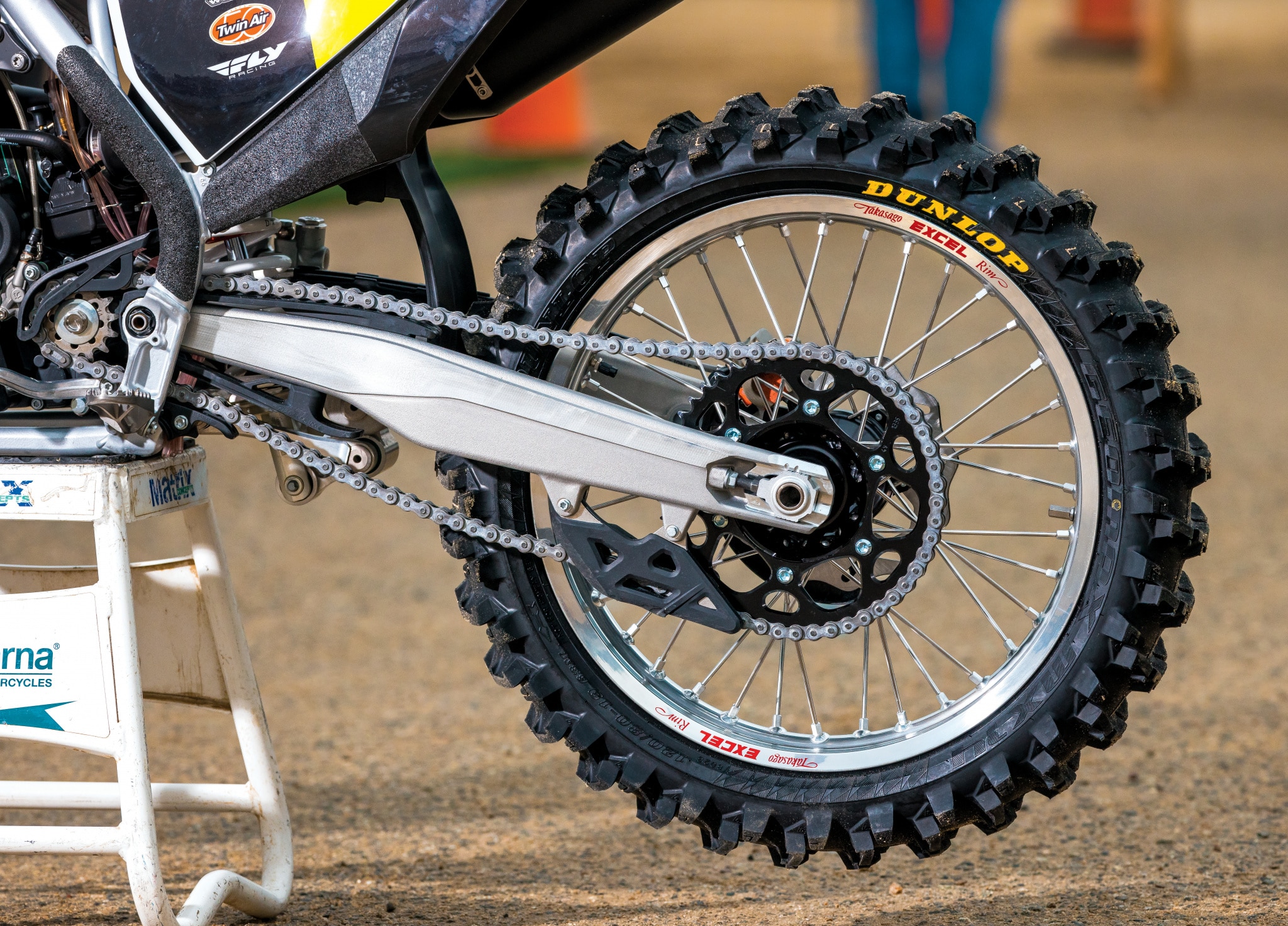 The newwst sand tire is the Dunlop MX14—it has shovel-shaped knobs to scoop the dirt.
The newwst sand tire is the Dunlop MX14—it has shovel-shaped knobs to scoop the dirt.
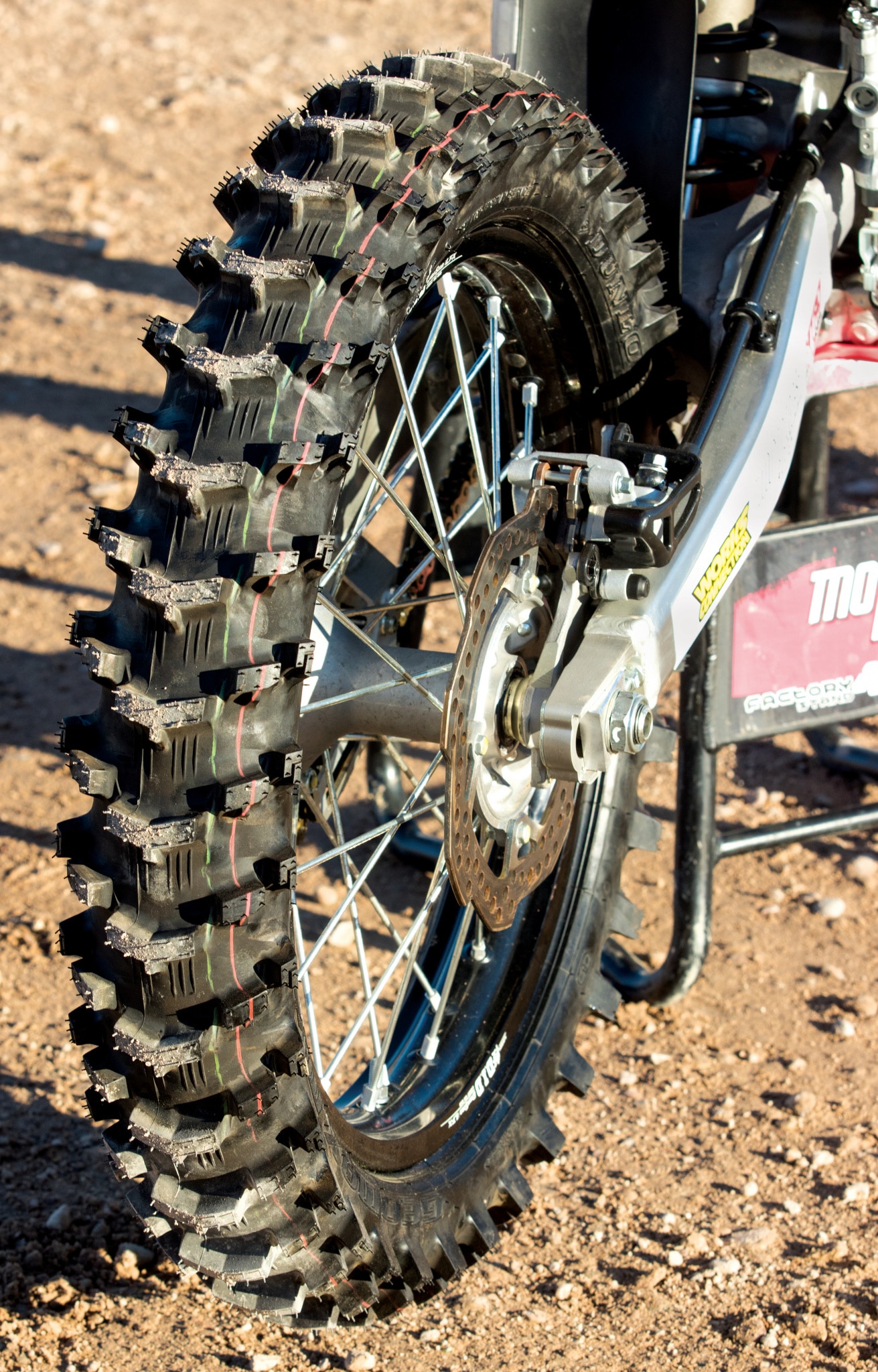 The Dunlop MX12 and MX14 have all the obvious features of a soft terrain tire.
The Dunlop MX12 and MX14 have all the obvious features of a soft terrain tire.
(4) Soft terrain. A soft-terrain tire is made for sand or mud, and it will have fewer knobs and more sea in the land-to-sea ratio. With this design, the knobs are shaped in more of a scoop or V-shaped pattern, allowing them to go deeper into the ground and grab more dirt with each rotation, propelling the bike forward. The spaced-out knob pattern on soft-terrain tires keeps the tire from packing up with mud. The rubber used for these tires has a higher durometer count, which is a measure of a material’s hardness. The stiffer tire digs into the soft dirt and maximizes traction.
(5) Hard terrain. The land-to-sea ratio of hard-terrain tires is the opposite of soft-terrain tires. Hard-terrain tires use more knobs in the land-to-sea ratio, which means more rubber is touching the ground and giving the tire more grip on the hard surface. The rubber compound is also softer, allowing the knobs to flex more. Hard-track tires have lower knob heights to help increase durability and traction.
(6) Intermediate terrain. Intermediate tires are designed to be a happy medium between soft- and hard-terrain tires. The size and spacing of the knobs are optimized to work well in a variety of conditions. The knobs are tall enough and spaced out enough to dig into soft dirt, but they aren’t too tall or too spaced out to be ridden on hard-pack dirt. The rubber compound is not too hard and not too soft.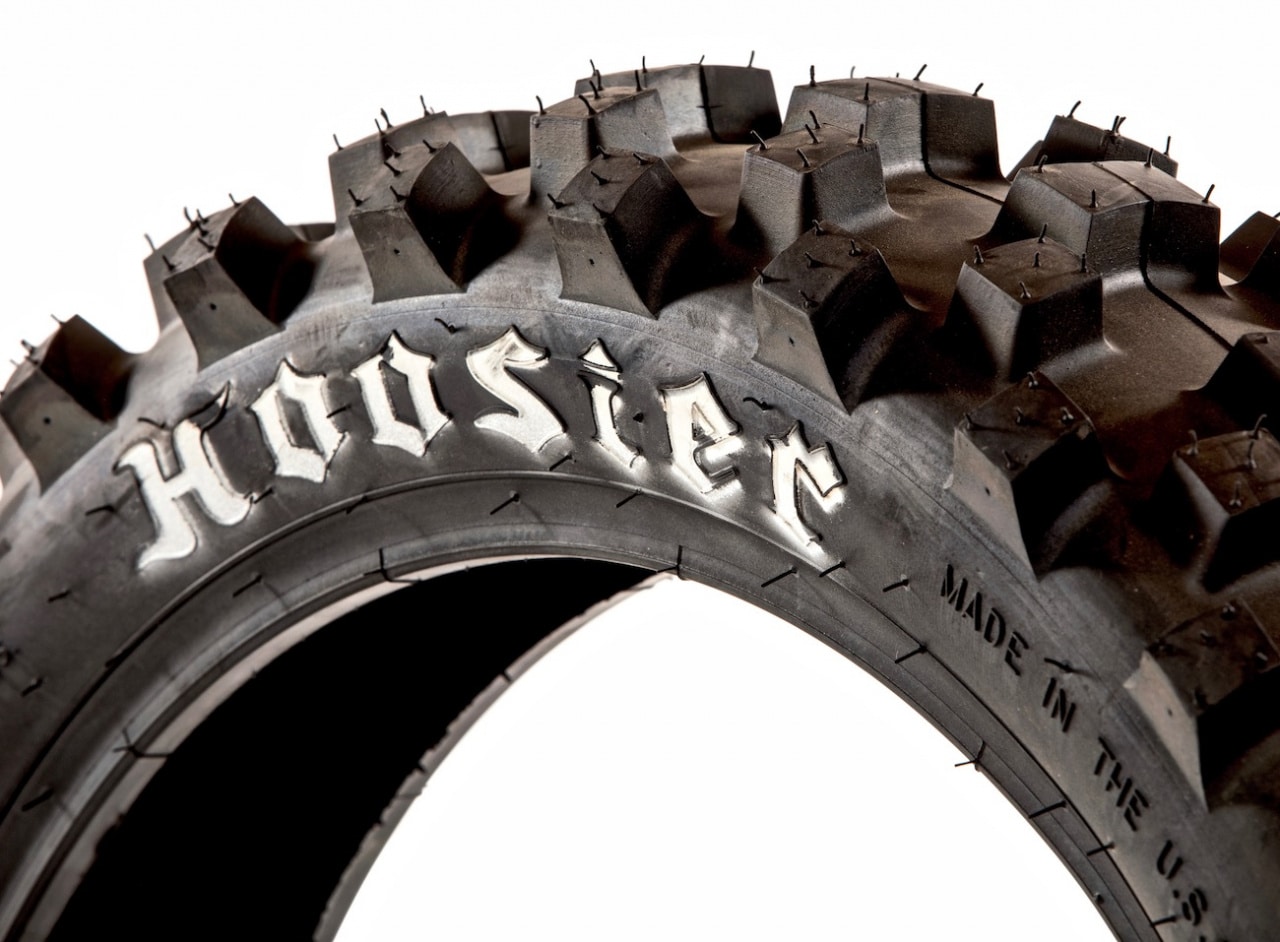 Hoosier built their name in car racing.
Hoosier built their name in car racing.
(7) Weight. Lighter tires make a big difference in motocross. They allow the suspension to be more responsive and react to bumps quicker. Tires are part of a bike’s unsprung weight. Unsprung weight is any weight that sits below the suspension. It is called “unsprung” because it is not supported by the springs. Heavier tires diminish horsepower and braking ability because they require more energy to start moving and more energy to stop. Lighter tires reduce the gyroscopic effect of the spinning wheels. With less gyro, the bike steers lighter, handles better and accelerates harder.
(8) Tire pressure. If your pressure is too low, your tire will be more susceptible to pinch flats and you’ll lose stability as the tire flexes beyond its design and rolls over. If the air pressure is too high, it could affect traction and the tire’s ability to follow the ground. Tire pressure rises as your tires heat up when riding or sitting in the sun.
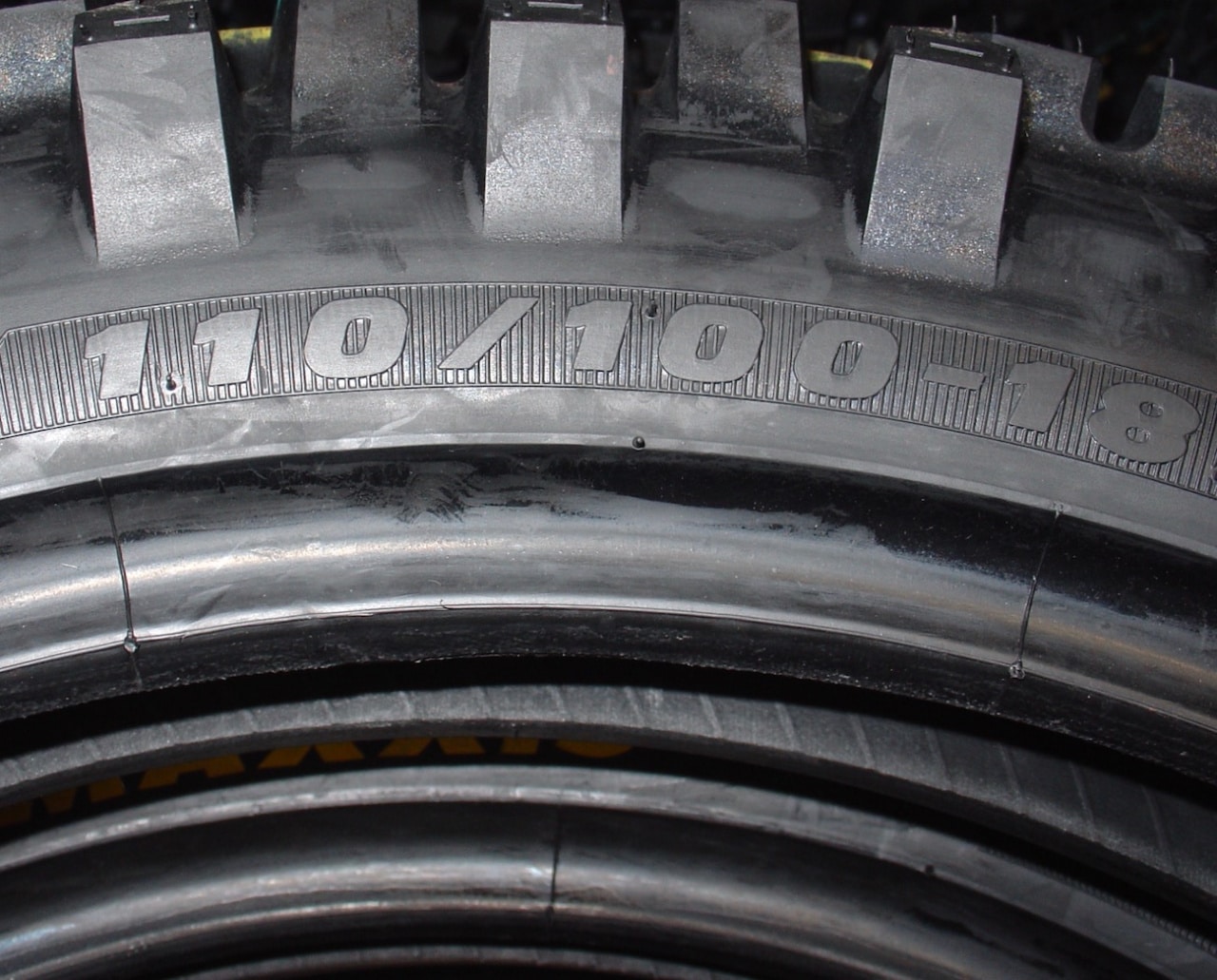 These three numbers are the width and it’s height percentage ratio along with the diameter of the tire.
These three numbers are the width and it’s height percentage ratio along with the diameter of the tire.
(9) Aspect ratio. There are three numbers that describe the size of the tire. Take a 120/80-19 for example. The first number is the width of the tire in millimeters. The second number represents the height of the tire as a percentage of the width. It’s not 80mm tall; it’s actually 80 percent of the width, which would be 96mm tall. The third number is the size of the rim in inches.
(10) Size options. The most popular front tires are 80/100-21, but there are more options when it comes to rear tire sizes. Most Japanese 125 two-strokes and 250 four-strokes use 100/90-19 tires (KTM and Husqvarna run 110-width rear tires). On more powerful bikes, riders typically choose between the 110/90-19 and wider 120/80-19 and taller 120/90-19 models. Most MXA test riders prefer to give up the improved straight-line traction of 120 rear tires for the improved cornering feel of 110s.


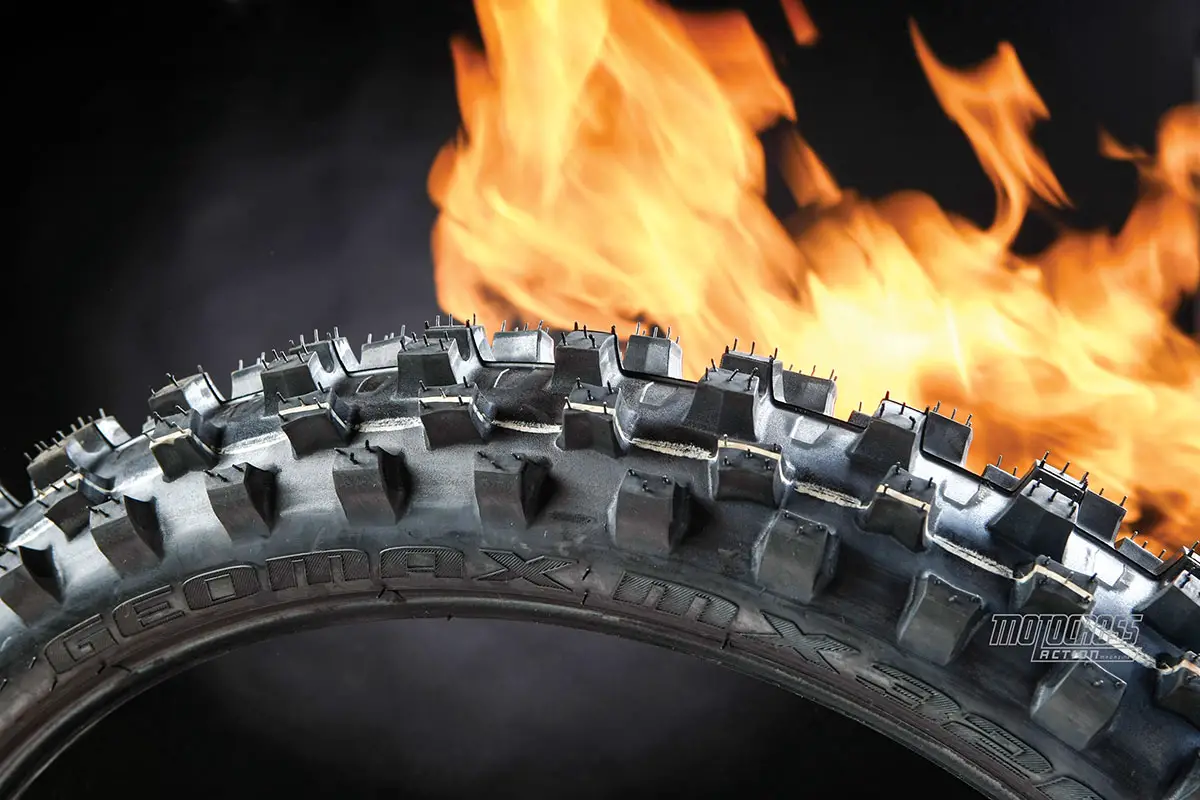




Comments are closed.